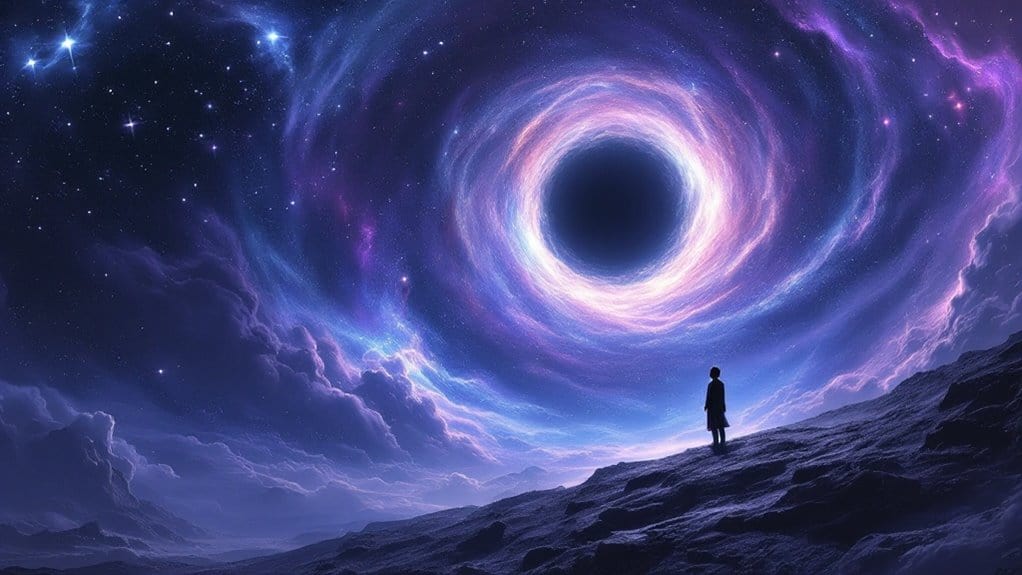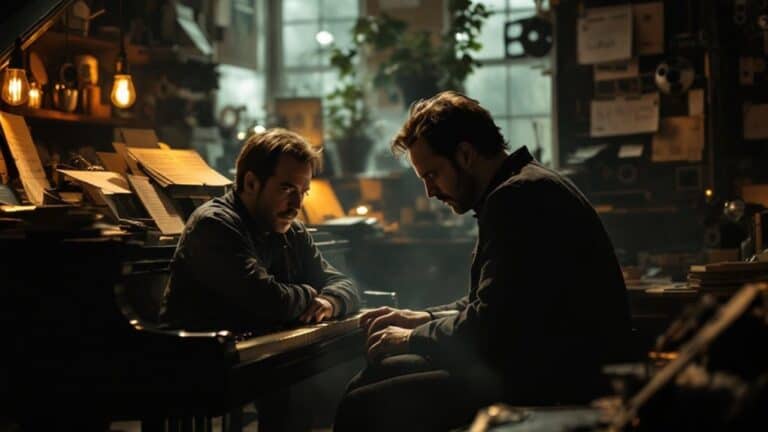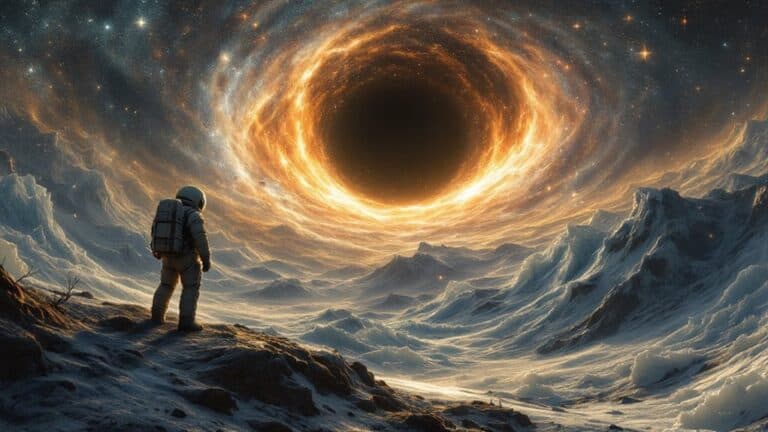Interstellar’s Existential Themes: What Does It Mean to Be Human?
In “Interstellar,” you’re confronted with existential themes that probe the essence of being human. The film explores how love transcends time and space, illustrating that our connections define us. You’re challenged to contemplate sacrifice’s emotional toll and the moral implications of choices on both individuals and society. As the characters grapple with isolation and hope, their struggles reflect humanity’s vulnerabilities against vast cosmic forces. This interplay between personal desires and collective responsibilities raises profound questions about existence and purpose. If you want to explore these intricacies further, you’ll find even deeper insights waiting beyond the surface.
Table of Contents
Key Takeaways
- Interstellar explores humanity’s essence through the significance of love, emphasizing connections that transcend time and space.
- The emotional toll of sacrifice highlights the complexities of human relationships and personal identity.
- Characters face existential dilemmas, questioning their purpose and the meaning of being human in a vast universe.
- The film illustrates the balance between individual desires and collective responsibilities, prompting reflection on moral decision-making.
- Hope emerges as a fundamental aspect of humanity, driven by ingenuity and resilience in the face of cosmic challenges.
Human Nature and Existence
Exploring human nature and existence reveals the deep complexity of our identity and purpose. As you commence on your individuality exploration, you realize that existence isn’t simply given; it’s shaped by your choices and actions. This process of self-realization, as described by thinkers like Kierkegaard, unfolds in stages—the aesthetic, ethical, and religious—each representing a unique perspective on life.
You’ll find that becoming increasingly individual is essential for authentic existence, while many around you may live inauthentically, caught in the web of societal expectations. The moral implications of your choices resonate deeply as you navigate relationships, responsibilities, and your own ambitions. Individuals often remain ignorant and are carried by events without making decisions, highlighting the transience of aesthetic existence. Understanding that human nature can be shaped by both innate dispositions and social context adds depth to your journey. As you grapple with the ethical implications of colonizing new worlds, you are reminded of the moral obligations we hold towards existing life forms and the consequences of our actions.
You’re part of a greater community, and your actions can either uplift or diminish that connection. This interplay between individuality and social responsibility challenges you to think critically about your role in the world. Whether influenced by Stoic ideals or Aristotelian rationality, embracing your individuality while understanding your place within a larger context is fundamental.
Ultimately, your journey toward self-discovery not only enriches your own life but also fosters a sense of belonging in a complex, interwoven human experience.
Existential Questions Explored
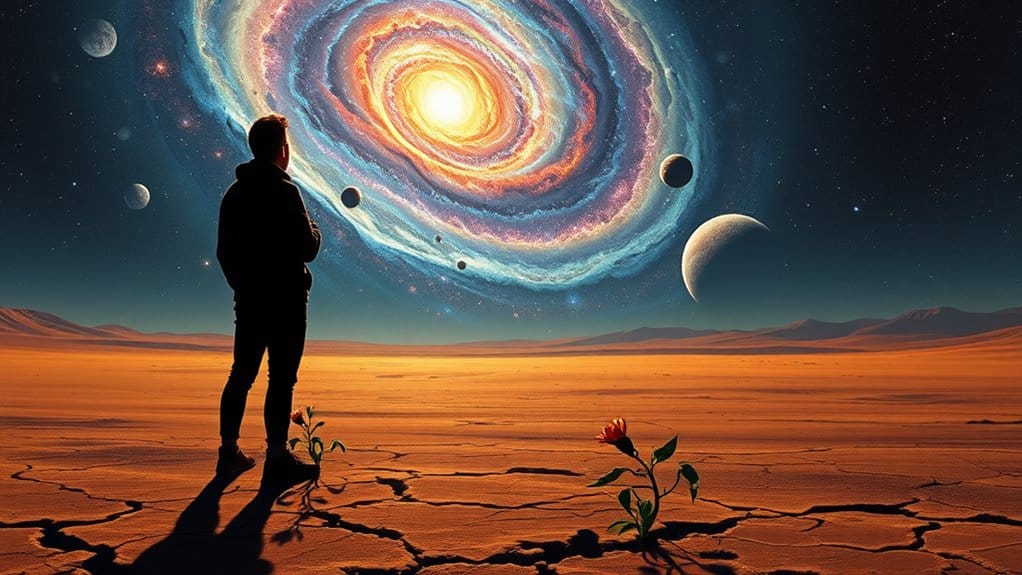
Interstellar explores deep into existential questions that resonate with the human experience, weaving together themes of love, hope, identity, and purpose.
At its core, the film illustrates how love’s transcendence can connect us across time and space, as seen in Cooper’s bond with Murph. This connection isn’t just emotional; it drives the plot and exemplifies human sacrifice, as Cooper leaves his family for the greater good of humanity. Notably, the film’s exploration of themes like hope and salvation reflects a narrative that resonates with Christian perspectives on life and purpose. Furthermore, the film aligns with the notion that human beings possess the ability to make choices and bear responsibility for those choices, which is a central tenet of humanistic psychology. The characters’ journey underscores the sacrifice they make, as each decision intertwines personal desires with the survival of humanity.
Consider these existential questions that the film raises:
- What does it mean for love to transcend dimensions?
- How do we navigate the emotional toll of sacrifice?
- In what ways do relationships shape our identities?
- How can hope emerge from human ingenuity?
Interstellar challenges you to reflect on your own relationships and the sacrifices you make. It emphasizes that the essence of being human lies in our connections with others and the choices we make.
Spiritual and Philosophical Insights
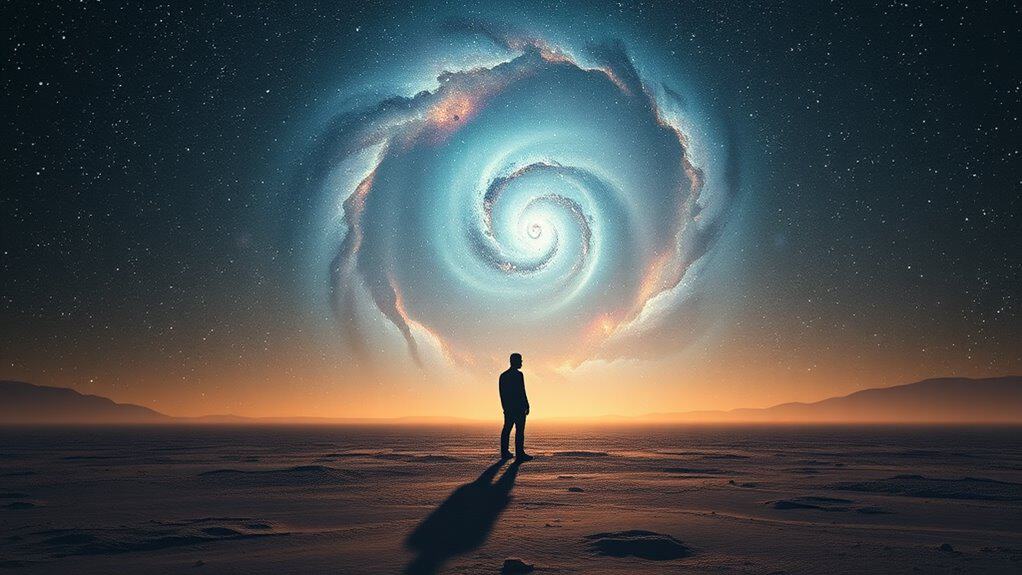
Delving into the spiritual and philosophical insights of the film reveals how love and curiosity drive humanity’s quest for meaning in the cosmos. As you watch, you’re invited to reflect on the profound connection between these themes and the human experience.
The characters’ struggles highlight the philosophical dilemmas we face—balancing individual desires with collective responsibilities. The film suggests that a spiritual awakening often arises from our relationships, where love becomes a guiding light, urging us to endeavor for self-improvement and deeper connections. This journey toward understanding is reminiscent of the film’s portrayal of the cyclical nature of existence, urging characters to confront and break destructive patterns. Moreover, the ethical implications of sacrificing individuals for the species illustrate the necessity of collective good in our moral decision-making. This idea resonates with existentialism’s emphasis on individual responsibility, reminding us that our choices shape not only our lives but also the lives of those around us.
In contrast, the character of Dr. Mann embodies humanity’s darker side, representing the corrupt nature that can hinder our quest for redemption. This duality—where secular love meets a more divine essence—encourages you to contemplate what it truly means to commit and sacrifice for those you care about.
The narrative emphasizes that while curiosity propels us outward into the cosmos, it’s love that nurtures our inner journeys, providing solace in the face of existential uncertainty. Ultimately, “Interstellar” challenges you to embrace these insights, turning philosophical dilemmas into opportunities for growth, connection, and understanding in an ever-expanding universe.
Character Dynamics and Growth
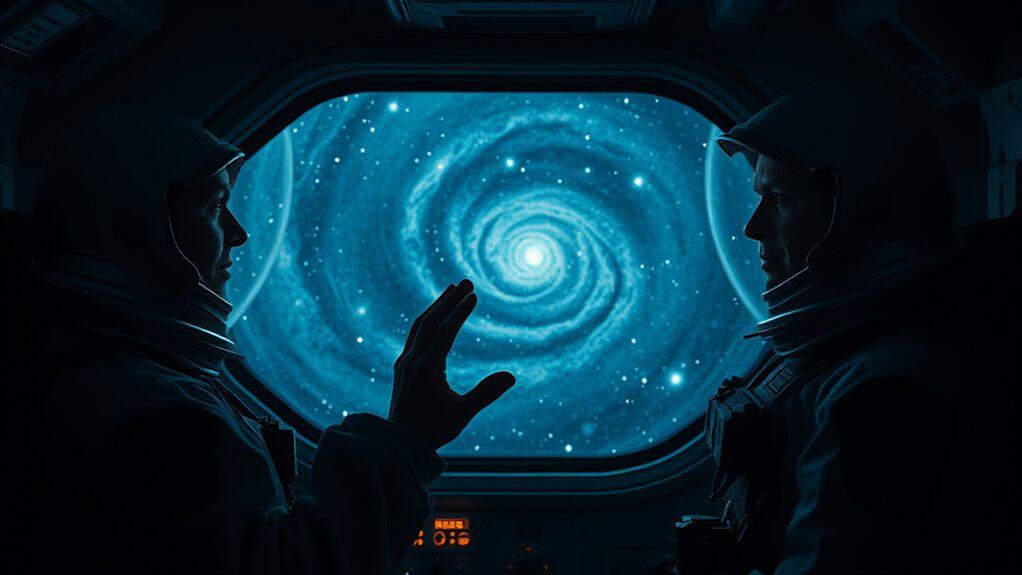
The intricate dynamics between the characters in “Interstellar” reveal how personal growth is influenced by relationships and the challenges they face. As you watch Cooper evolve from a humble farmer to a leader of a critical space mission, you can feel the weight of his emotional conflicts. His love for his children pulls him in one direction, while the necessity to save humanity pulls him in another, showcasing the complexity of character relationships.
- Murph’s stubbornness and compassion drive her to confront her father’s departure, which is complicated by her feelings of abandonment due to his NASA mission.
- The crew’s diverse backgrounds create tension, yet they must unite for a common goal, reflecting Cooper’s former career as a NASA pilot.
- Dr. Mann’s darker motivations illustrate the inherent conflicts in human nature.
- Themes of love and sacrifice underscore the necessity of connection amidst chaos.
These character dynamics not only highlight individual transformations but also emphasize how intertwined relationships can catalyze growth. The struggle against world hunger and pollution serves as a backdrop to their profound personal journeys.
Murph’s journey, marked by her father’s absence, reflects the struggle to find belonging in a world filled with uncertainty.
Ultimately, “Interstellar” invites you to ponder how love, sacrifice, and emotional conflicts shape what it means to be human in the vastness of the universe.
Cinematic Techniques and Symbolism
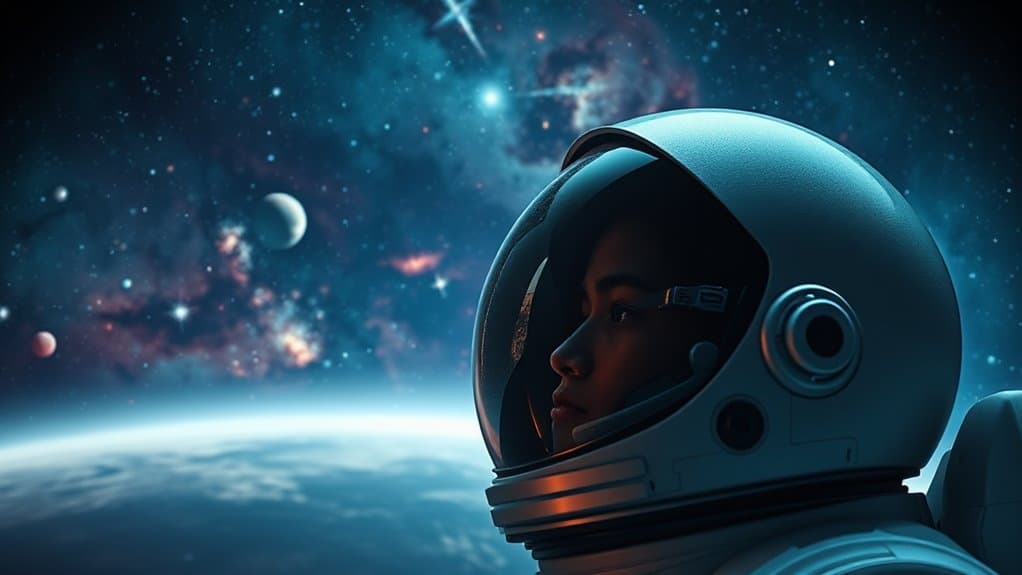
Cinematic techniques in “Interstellar” intricately weave together visual storytelling and symbolism, creating a profound emotional experience for viewers. The use of IMAX cameras and specific lenses enhances the film’s epic scale, drawing you into the immersive beauty of space. With shallow depth of field, characters appear like portraits, allowing you to connect intimately with their struggles. Silence in space scenes emphasizes isolation, making you acutely aware of humanity’s vulnerability against the vast cosmos. The film’s innovative camera techniques effectively convey the vastness of space, heightening the sense of wonder and existential questioning.
Symbolic elements abound; Cooper’s watch signifies the unbreakable bond between him and Murph, transcending time and space. Dr. Mann embodies the darker side of human nature, illustrating how isolation and impending death can breed betrayal rather than hope. The black hole, Gargantua, serves as a powerful metaphor for the unknown, pushing the boundaries of human understanding, while the wormhole represents new possibilities for survival. Additionally, the juxtaposition of Earth’s nurturing landscapes with desolate planets serves as a symbolic contrast that reinforces the film’s existential themes.
Through thoughtful juxtaposition and visual contrasts, the film highlights the differences between Earth’s nurturing landscapes and the desolate planets, reinforcing its existential themes.
Ultimately, “Interstellar” invites you to reflect on what it means to be human, blending technical mastery with rich emotional depth, making it a cinematic experience that resonates deeply.
Conclusion
In “Interstellar,” you’re not just watching a film; you’re commencing a profound journey through the essence of humanity. The existential themes challenge you to confront your own existence, pushing you to ponder what it truly means to be human amidst the vastness of space. As characters evolve and grapple with love, sacrifice, and survival, you’re reminded that, like stardust, our connections define us. Ultimately, it’s this exploration of the human spirit that resonates long after the credits roll.

